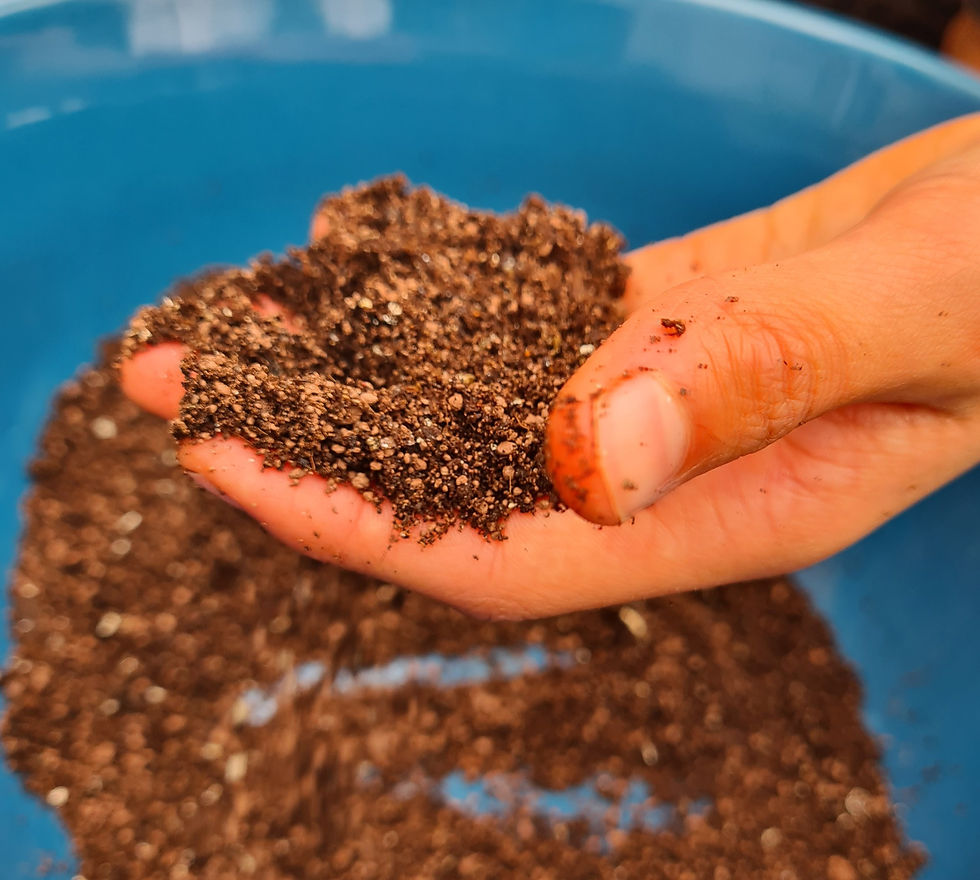How to get the most out of your Seed Bombs
- alicekeverne
- Mar 23, 2022
- 3 min read
Updated: May 18, 2022
Our organic wildflower Seed Bombs are hardy and adaptable and can be grown indoors and outside. They can be placed in containers, on stone walls, flower beds, around trees, along river banks, gravel areas and woodlands. Although if the Seed Bombs do not have the right weather conditions, they may struggle in these environments. To make sure your Seed Bombs get the best results, follow our guide below:

Best time to plant
Your Seed Bombs can be scattered throughout the year, as the clay protects them until they are ready to germinate. The optimum time to plant for faster results is spring and autumn, after the danger of frost.
Avoid spreading your Seed Bombs during the heat of the afternoon. Try sowing in the evening and just before rain is forecast.
Where to plant
POTS & PLANTERS: Seed Bombs can flourish even in planters. Load pots or planters with peat-free compost and soil, then place one or two bombs on the surface pressing them in gently, then water.
INDOORS: Placing a single Seed Bomb in a plant pot on a sunny windowsill, for children to tend and care for, is a great way to show them the growing process from seed to flower. This can be done anytime of the year, providing the plants are warm, watered and in sunny spot.
OUTDOORS: Ideally a weeded, sunny location, pushed in slightly, directly on top of soil (avoiding grass). A site that is warmed by sun rays for at least six hours in the day is an ideal location.

How to get the most out of your Seed Bombs
Your Seed Bombs will grow in most places providing there is ample sun, water and time. For the wildflowers to have optimum growth, clear away all unwanted plants, grass, and weeds before placing down your Seed Bombs. With less roots to battle with, germination will be faster and the wildflower plants will grow healthier.
Do not sow the Seed Bombs too densely. Allow 1 Seed Bomb per square foot of soil.
Make sure the seedbed is kept moist and doesn’t dry out, but do not over water or allow it to become waterlogged, this can be just as bad as drying out.
If your Seed Bombs are inside or under cover then you will need to water them every 1-2 days.
Avoid planting your Seed Bombs in windy weather as this can damage and disperse the clay and compost that protect the seeds.
Scattered Seed Bombs should not be broken, picked up or moved once it has rained, as this could damage any growing roots. Germination occurs after the clay is permeated with water.
Points to remember
If you don’t want to use the Seed Bombs straight away, they can be stored in a cool, dry place until ready to use.
There is no need to dig! As the wildflower seeds are encased in clay and peat-free compost, they are essentially already “planted”.
Your Seed Bombs need a lot of water, sun and time. Wildflowers are hardy and adaptable but slow growers.
Each wildflower species has a different flowering time and length of time taken to come into flower – some will flower in the first year and others will flower in the following year.
The Seed Bombs will begin to grow as a cluster of plants, but will later disperse as the clay itself disintegrates and disperses.




